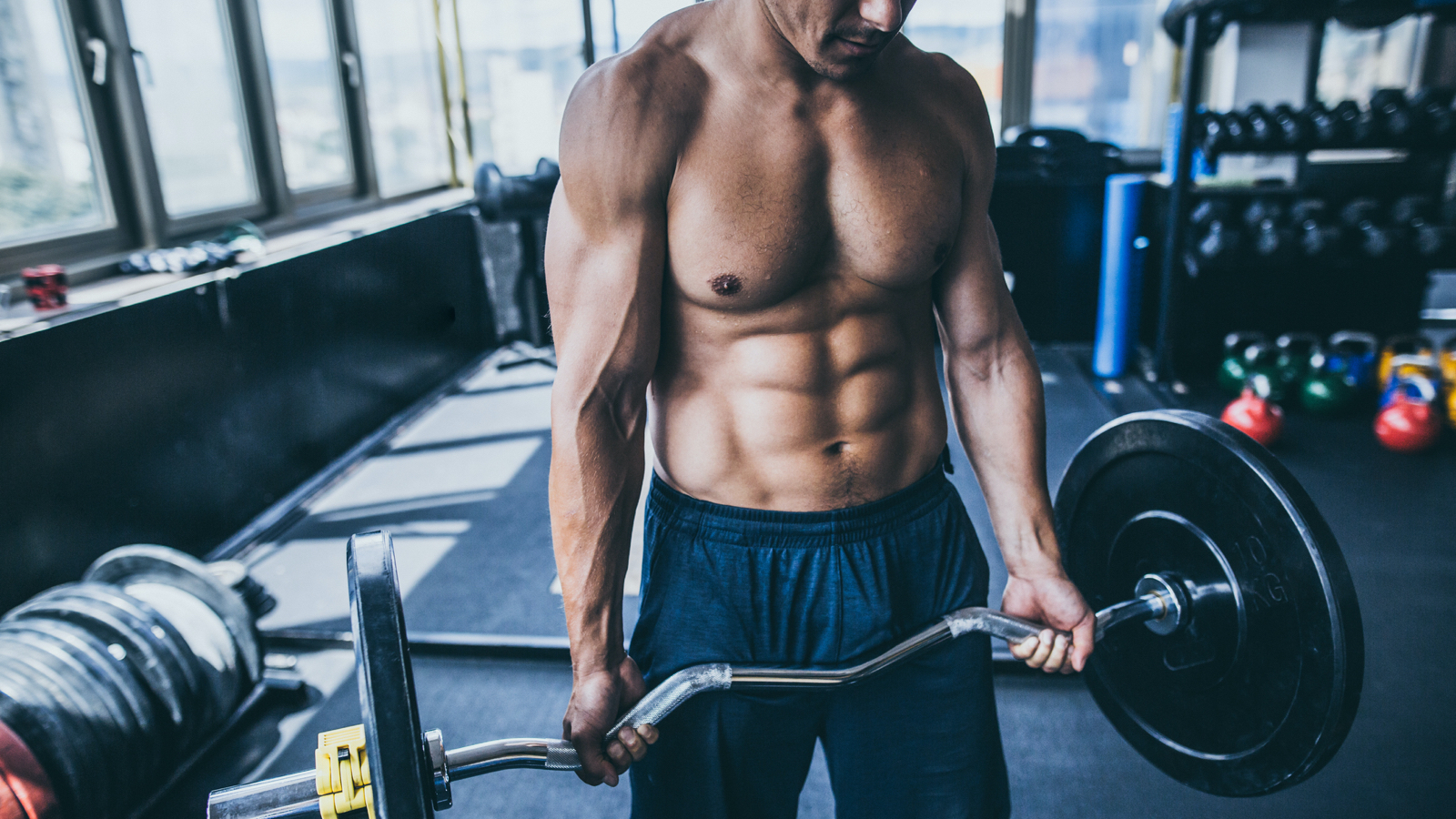
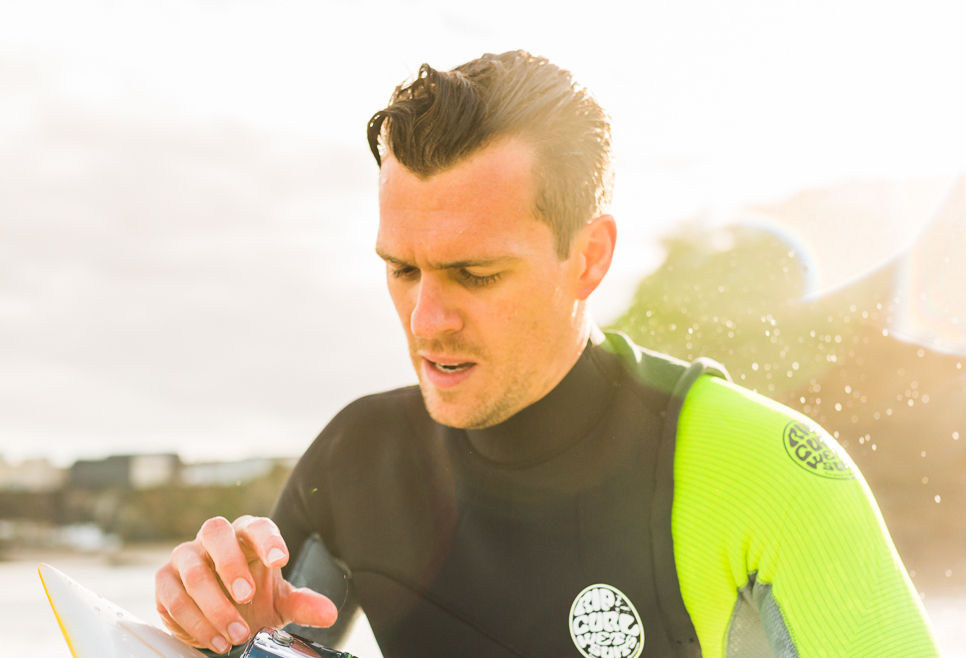
When anyone thinks of ways to get big arms, they immediately cast their mind towards biceps workouts. For centuries, this relatively small muscle group has been the ultimate indicator of health and strength. Heck, we’ve got multiple guides on the best way to build bigger biceps, whether that’s in the gym or, especially post-lockdown, with your home gym equipment.
But in order to build a set of well-rounded, impressively powerful arms, you shouldn’t neglect the triceps or the deltoids - the large muscle group that makes up the front of the shoulders and is particularly important when properly filling out shirtsleeves.
Thankfully, this can be achieved from the comfort of your own home with minimal equipment, but we would suggest investing in a few items in order to promote progressive overload, which is the art of gradually increasing weight over time to stimulate and challenge the muscles to promote growth.
A set of the best dumbbells you can find should be top of the shopping list. Ideally you want ones that adjust to offer multiple weights but failing that, purchasing one lighter set and a heavier set will increase the flexibility and allow you to carry out a variety of movements with the correct resistance.
Don’t ignore the old school barbell and some weight plates either, because this simple piece of equipment is arguably the most versatile out there and is absolutely essential to building serious strength, which in turn leads to serious bulk.
An often overlooked piece of equipment for building bigger arms is the humble pull-up bar. With the option to switch grips and master the dark arts of single-armed and kipping pull-ups et al, it’s a brilliant and low cost way of working every muscle in the arms. If all else fails, we also have a no-dumbbell workout for big arms.
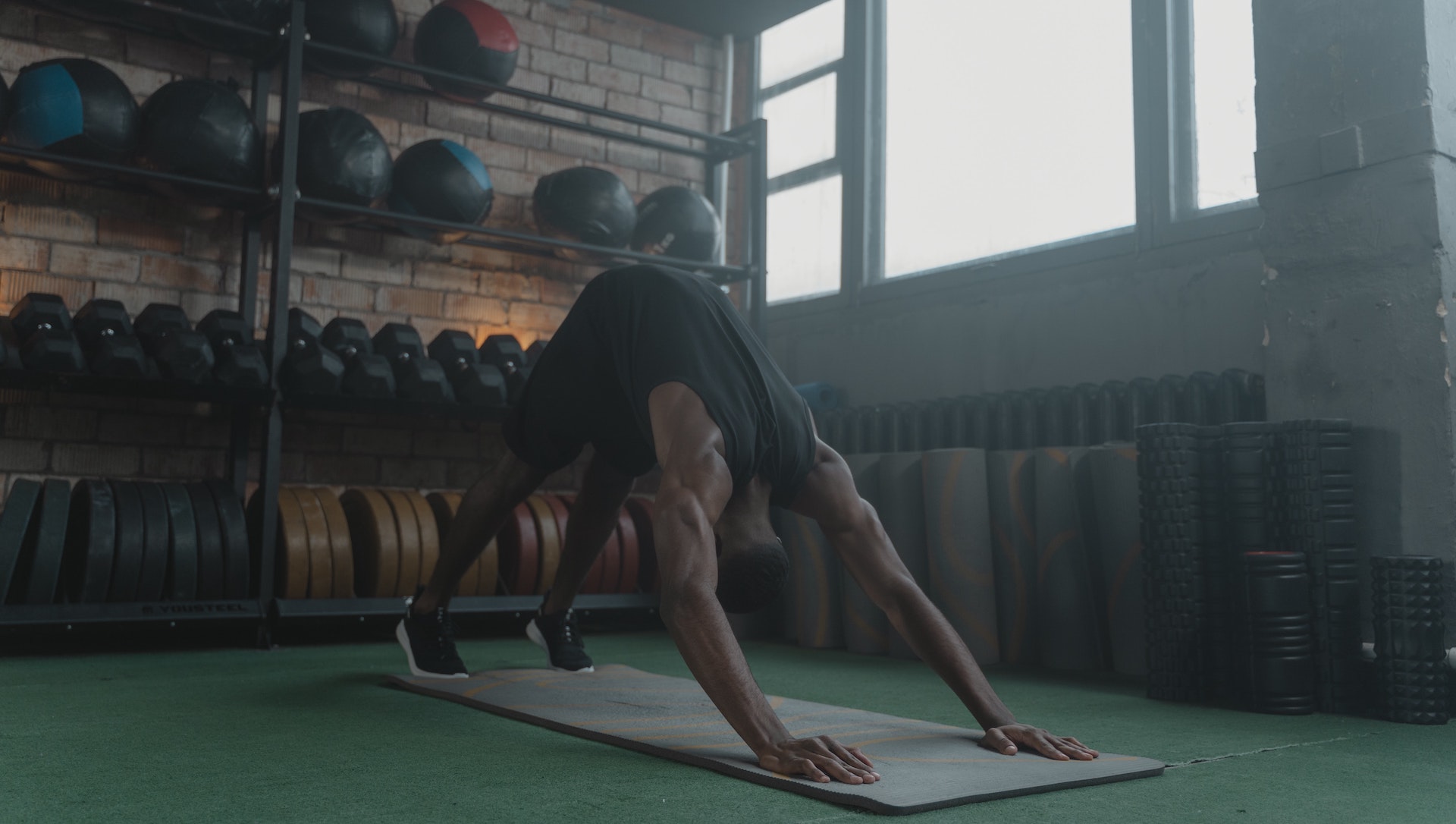
How to perform the best exercises to build bigger arms
Convincing any muscle to adapt and grow takes some dedication and it’s not as simple as picking up some iron and throwing it about the place. This is particularly true with the muscles of the arms, because the biceps, triceps and deltoids need some fairly dedicated exercises to target them properly. That said, we have included - cue dramatic music - a word on overtraining (below), because it is easy to overlook the fact that the arm muscles are fairly essential to most upper body workouts.
Sign up to the T3 newsletter for smarter living straight to your inbox
Get all the latest news, reviews, deals and buying guides on gorgeous tech, home and active products from the T3 experts
With that in mind, we’ve collated some of our favourite exercises that hit the biceps, triceps and deltoids hard. But don’t consider this a workout in its own right. Instead, look to sprinkle these moves into an existing or new workout routine to ensure the muscles are being pumped throughout the week. Aim to work biceps, triceps and deltoids twice a week if you can - this is in addition to any existing workout you might perform.
Here are some good workouts to get you started
- A brilliant workout for complete beginners
- Anyone can do this three-day, full body workout
- Cover all bases with our very best full-body workout
It’s good practice to train supporting muscle groups on the same day, which helps avoid the risk of overtraining. So, when you’re doing a lot of pull exercises (on back day, for example) you will also be using the biceps. It makes sense to throw some of these focussed moves in on this day.
Similarly, push exercises like the bench press will also incorporate the triceps, so throw in some tricep-specific exercises in here.
The deltoids are a little trickier, as shoulders tend to bear the brunt of many big push exercises, particularly if they aren’t executed with good form. But adding them to a more comprehensive shoulder and back workout, while allowing them some rest by following the session with a lower body workout, should give the delts plenty of time to recover.
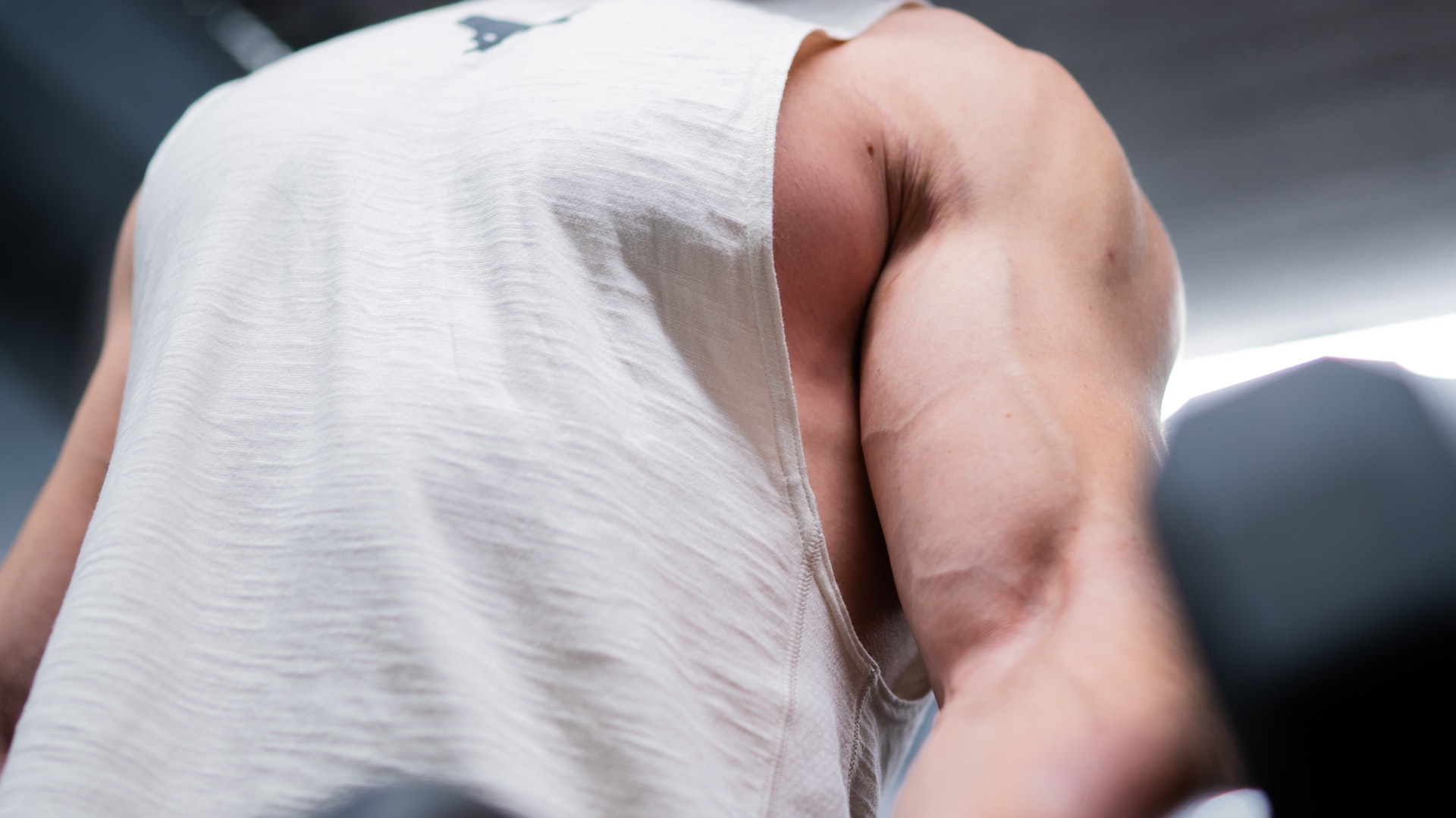
A word on overtraining
As previously mentioned, it’s very easy to overtrain the muscles of the arms, not allowing them sufficient time to recover and stunting the ability to adapt and grow. A study by The Canadian Journal of Applied Physiology found that the muscle protein synthetic rate (the process that makes your muscles grow) is at its highest point 24 hours after resistance training and tails off thereafter.
This is why most athletes and personal trainers aim to allow at least 24 hours rest between sessions, or carefully plan workouts so that they avoid a muscle or muscle group that has previously been worked hard.
With that in mind, it’s worth thinking about splitting workouts so those with lots of heavy arm exercises are then followed by a lower body routine, as this will allow time to rest. Or better still, factor in a solid rest day before hitting the biceps, triceps and deltoids again.
Take a look at this Push/Pull workout that gives adequate rest for muscles but still allows you to train more frequently.
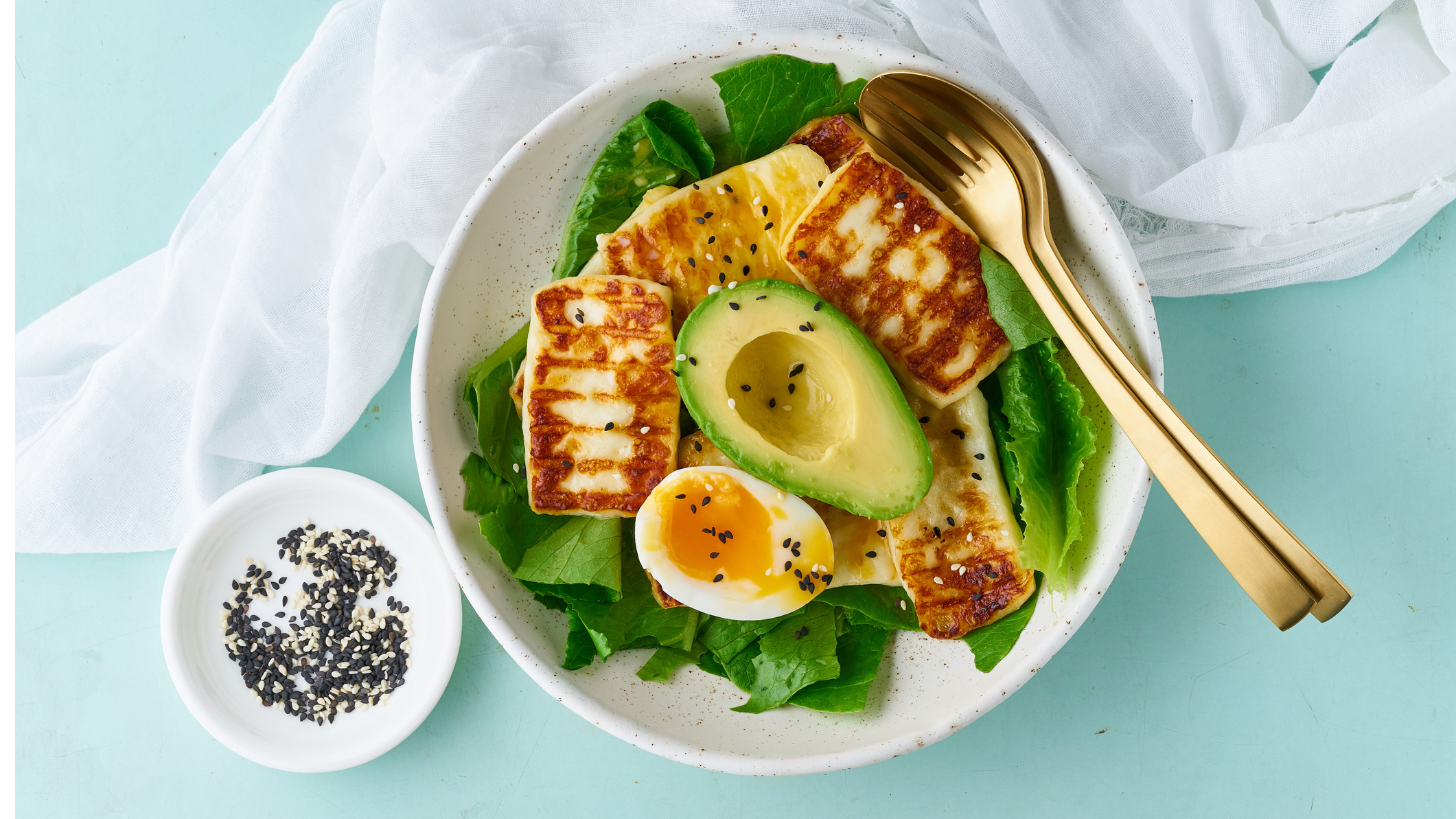
Nutrition is key
"If you’re not taking in the right foods, then you can do all the arm exercises you want but you won’t get bigger arms," explains Keith Niven, founder of London based personal training company Right Path Fitness.
"What your body will do is grab onto your carb reserves. The result can be an actual loss of muscle mass and probably the opposite result that you want," he adds.
Eating the right foods is key and one of the most important aspects of weight training is ensuring you have enough protein (the building blocks required for muscle repair) in your diet. As a rough guide, try to aim for around 1.7g of protein for every kilogram of bodyweight. There are plenty of sources of protein to choose from, whichever diet you follow, so check out some more of our nutritional advice here.
Also, one of the best ways to build muscle is to ensure you are in a calorie surplus every day, which means increasing the amount of food you eat on a daily basis. The average intake for a man is between 2,000 and 3,000 calories, depending on age, height, weight and activity level, but you will want to increase this by around 20 per cent when bulking up.
This link has a good online calculator to workout your Basal Metabolic Rate, which is the number of calories you need per day to maintain your weight.
But hold your hungry horses. Requiring a calorie surplus doesn’t mean you can gorge on pizzas, burgers and other nutritionally-bereft fatty foods, as you’ll simply put on weight and not achieve the desired results. Instead, look to get your daily calorie intake from balanced, high protein and natural sources like lean meats, vegetables and whole (or simple) carbs, such as quinoa, sweet potatoes and whole grains.
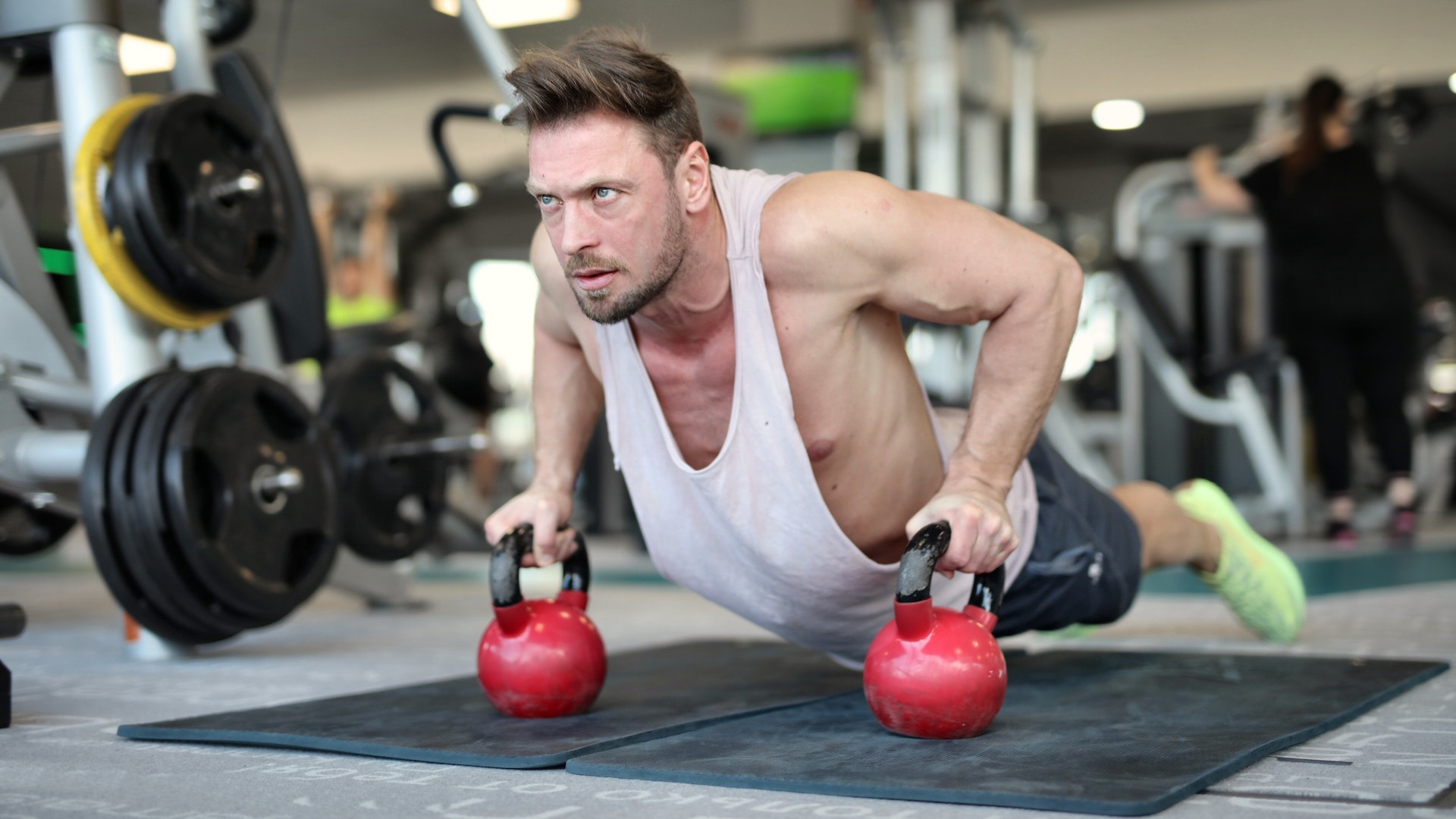
The best exercises to build bigger arms
We have spoken to the experts and collated the best exercises to build bigger arms, chopping up the list into three targeted areas: the triceps, the biceps and the deltoids. We’ve also tried to include a range of movements that can be performed with little to no equipment and those which perhaps require something more specialist and gym-focussed.
Triceps
It makes sense to start with the triceps, because the muscle takes up around two thirds of the upper arm and is responsible for creating width, which is why we haven’t stormed straight into the bicep moves.
Close Grip Push-Up
A classic bodyweight exercise that can be performed pretty much anywhere and at anytime, it places the triceps under constant tension without the potential injury to the shoulders caused by a traditional (and often frowned upon) “diamond push-up”.
So, rather than making a diamond on the floor with your hands (and potentially blowing your shoulders up), simply get into a standard push-up position but place the hands under your chest, slightly narrower than shoulder-width apart.
Now lower the chest to the floor, keeping a perfectly straight line running from the top of the spine to the heels of the feet and engaging the glutes and abs, while keeping the elbows pinned to your sides.
If you find your elbows flaring out, try ‘screwing’ the palms of your hands into the floor. This should encourage everything to remain tight as you lower. Once the upper arm is parallel to the floor, explosively push back up, ensuring the elbows remain glued to your sides. That’s one rep.
Beginners should aim for four sets of 6-8 reps, while those more advanced fitness fanatics should look to increase the number of reps in a set until the final set is performed to failure.
Dips
Again, this exercise can be performed anywhere with parallel bars or railings… or even with two strategically placed sturdy chairs to hang on to.
Avoid making this a chest exercise by ensuring the hand width is narrow so that the elbows are as close to the body as possible. During the lowering portion, ensure the legs are up off the ground and tucked backwards, while the torso remains nice and upright.
Keep the head in a neutral position and lower your bodyweight to the point where shoulders drop just slightly below the elbow at the bottom of the move. Keeping arms as close to the body as possible, push back up to the top of the move and lock out the arms. That’s one rep.
Make this harder by either adding some weight to your body in the form of a weighted vest or by hanging plates from a belt, or simply slow the tempo right down on both the lowering and pressing portion to keep the triceps under tension longer.
Underhand Cable Pushdowns
This move requires access to a cable machine (or a pulley system if you have a rig or rack set-up at home) but is excellent at hitting the longer head of the tricep and giving the emphasis that makes it pop out from under a t-shirt.
Grab a bar (preferably one with a slight camber to make it easier on the wrists) and attach it to a pulley machine that’s set in a high position. Now place your hands around shoulder width apart in an underhand grip, so knuckles are facing you.
Pull the shoulders back and down towards your butt and press elbows into your sides and ensure they stay there throughout the set. Make sure the wrists are flat and don’t curl while you pull straight down, squeezing the triceps at the lowest portion of the move.
Return to the starting position, controlling the bar throughout and that’s a single rep completed. Using a bar can be a little tough on the elbows for beginners but can be made easier by using two loop straps instead.
Start out light and perfect form, ensuring you are isolating the tricep, before gradually increasing the weight and reps over the course of a few weeks.
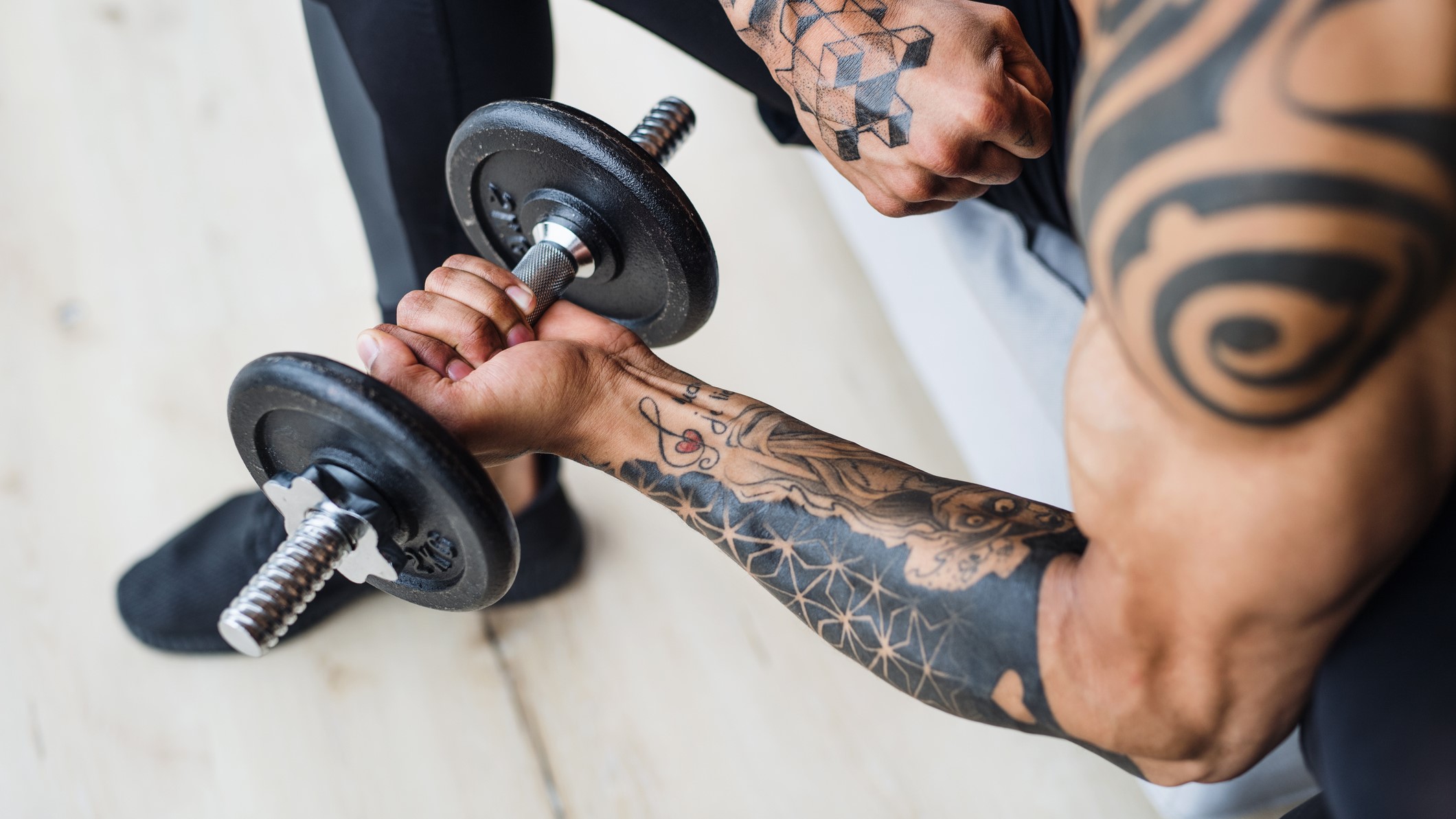
Biceps
The biceps can be stubborn muscles to bulk up, simply because it’s difficult to start piling on the weight while maintaining correct form. With this in mind, look to mix up your sets and reps instead. Try supersets (where you combine multiple exercises with zero rest in-between) or dropsets (where you quickly lower the amount of weight once failure is reached and continue throughout the set with little or no rest).
“Essentially, biceps react best to a lot of stimulation, which means packing in plenty of volume when training. So avoid ego-lifting really heavy with terrible form and instead try to increase the amount of reps with perfect form instead,” explains Dan Best, owner of The Calibre Gym.
Underhand Pull-up (or chin-up)
Although it is possible to hit the biceps with push-up variations, it’s quite difficult to isolate them with no equipment. But don’t panic if you don’t have access to a gym, because investing in a pull-up bar is cheap and easy to set-up in most homes. Or you can simply hunt out a monkey bar in a local play park or just a decent tree branch.
Grab a solid bar with an underhand grip, so knuckles are facing you, and set the grip so your biceps are directly underhand. From a full hanging position (with arms completely extended), it is a case of driving upwards while keeping the elbows pointed forwards, contracting the biceps as hard as possible, until the chin is way above the bar and it is, in fact, pressing into your upper chest. Lower to a full extended hang and that’s one rep.
If you find this difficult, and don’t panic because many do, try looping a heavy resistance band around the bar and placing a foot inside the other end of the loop. This will provide some assistance and help you build towards unassisted reps in the future.
On the contrary, if you can bust out hundreds of underhand pull-up reps, it’s time to add some weight in the form of a weighted vest or belt.
Barbell Curl
It is and oldie but a goodie and when performed properly, the barbell curl isolates and hits the biceps like little else out there.
Grab a barbell with little or no weight on it to begin with and place the hands slightly wider than shoulder-width apart. Engage the shoulders by drawing them back, as this encourages the elbows to move backwards slightly.
Now curl the weight upwards by contracting the biceps, ensuring the wrists remain flat and the elbows stay slightly rearwards. To place the most emphasis on the biceps, don’t curl straight upwards but instead look to “take the long way round”, which entails curling the bar in a sweeping arc from below the waist to just below the chin. Keep the tempo slow and controlled.
“A great way to activate the biceps before you start curling is to hold the bar in the topmost part of the curl for twenty seconds, contracting the biceps as hard as you can. This really wakes them up and makes the remaining reps even harder,” says Dan Best.
Decline dumbbell curls (or Spider Curl)
For this move, you’ll need a good set of dumbbells and a bench that can be adjusted into an incline position. Set the bench to a 45-degree angle (or somewhere thereabouts that feels comfortable) and lay on it so the chest is pressed into the top of the bench. Your head and shoulders should be above the top of the bench and legs planted wide on the floor to create a stable base.
Now grab a set of light dumbbells (to begin with at least) and let the arms hang so they are fully extended - this is the start of the move. From here, hinge at the elbow to curl the dumbbells up towards the top of your shoulders ensuring the upper arms remain static. Squeeze the bicep at the top of the move hard and slowly lower in a controlled fashion.
Removing the legs and core from a standard standing dumbbell curl essentially isolates the biceps in this variant, meaning you will probably find it hard to lift big weights. To mix things up further, try rotating your grip slightly (thumbs to the floor or the sky) to work different parts of the biceps.
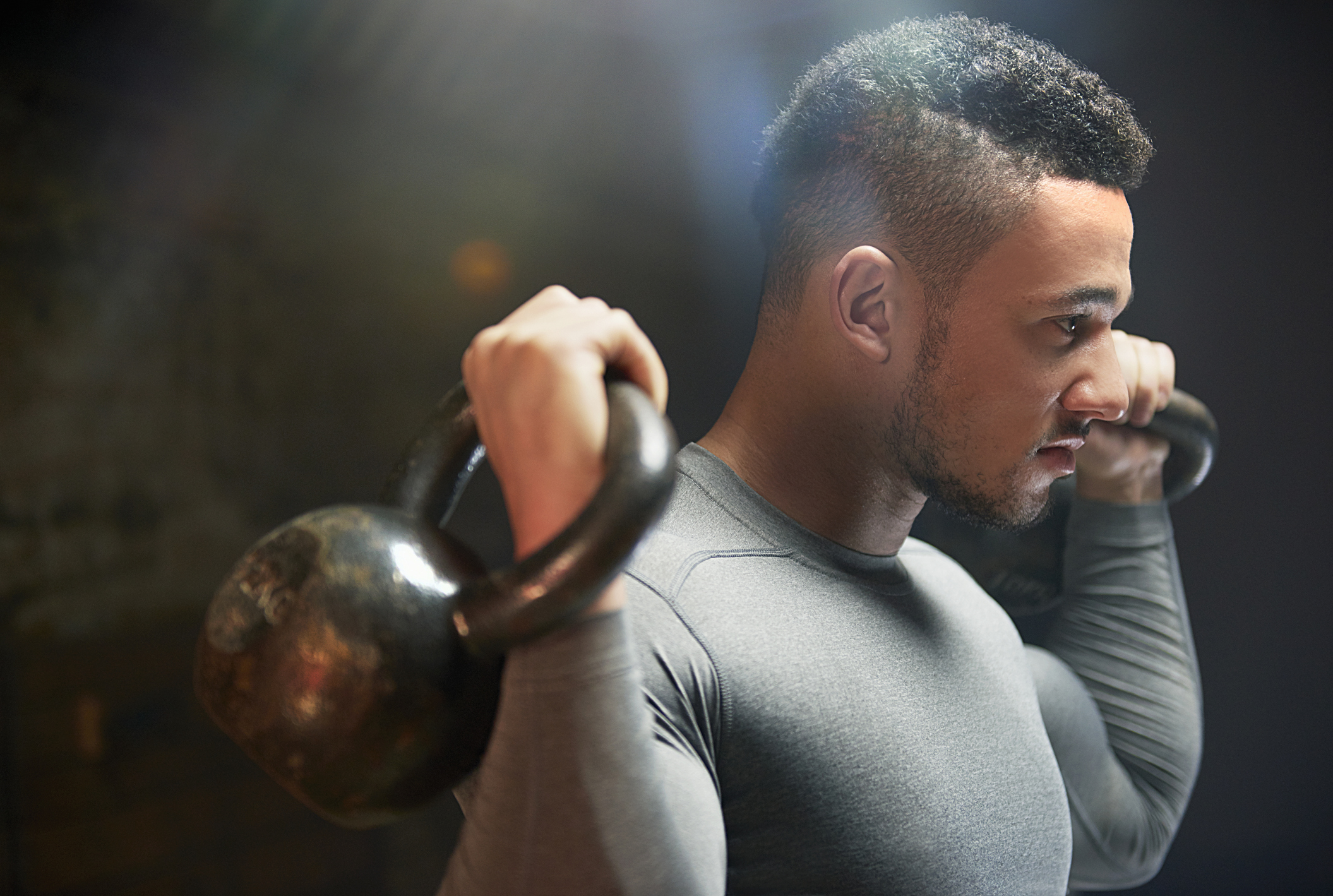
Deltoids
Shoulder workouts are rarely pretty, with many avoiding them thanks to the deep burn they often elicit in the front deltoids. But that sensation means you are successfully activating this important muscle group, which helps build bulk at the top of the arms to nicely fill out a t-shirt.
Of course, big dumbbell and barbell movements, such as the overhead press and Arnold Press, will fire up the deltoids. but we’ve picked some more targeted movements that require just the bodyweight or very light dumbbells to perform.
Pike Press-Up
This manoeuvre will start preparing the delts, as well as your core and other stabilising muscles, for the acrobatic handstand press-up. You know, that move some ridiculously jacked chap in the gym busts out to show off.
Anyway, grab a Plyo Box or a sturdy platform like a chair and plant your feet on the elevated surface. Create a nice A-shape that runs from the legs - and peaking at your glutes - to the palms of your hands, which will be pressed into the floor. Ensure you keep the back straight and head in a neutral position between your shoulder blades.
From this position, it’s simply a case of lowering your head towards the ground as you would with a standard press-up, but ensure the core and glutes are braced throughout. The more extreme the angle of your pike, the further your range or motion and the harder this exercise is. To make it easier, simply walk the arms out so the angle of your body isn’t so steep or try it with feet planted on the floor instead.
Targeted Lateral Raise
Like the decline dumbbell curl above, performing a standard lateral raise with dumbbells on a bench removes the legs and core from proceedings, honing in on the shoulder muscles and encouraging that deep burn in the deltoids.
Set a bench in its fully upright position, ensuring the seat is flat. Kneel on the seat with your chest pressed into the bench and adopt a braced, upright position with a light dumbbell in each hand. Ensure knuckles are resting just at the edge of your glutes.
Engage your shoulders by pulling them back and slightly down. With a slight bend in the elbows, raise both arms directly up until they are parallel with the ground below. Make sure little fingers are pointed to the sky at the top of the move to place extra emphasis on the deltoids. Pause here for maximum effect and slowly lower.
Crush Grip Press
Admittedly, this move is a favourite of Jeff Cavaliere of ATHLEAN-X, but I can personally vouch for how good it is for targeting the delts while avoiding shoulder injury.
The beauty of this exercise is that it can be easily adapted, simply by changing your pressing position you can make it slightly easier or harder. Plus, all you’ll need is a single dumbbell or anything heavy that you comfortably hold and squeeze, like a kettlebell or small weight plate.
Stand upright with a solid stance and grab a single dumbbell by first interlocking your fingers and wrapping them around the handle. This will allow you to squeeze the life of that handle as you press out.
From here, raise the dumbbell to the middle of your sternum and attempt to crush the grip with your hands. Simultaneously press the dumbbell directly out in front of you for maximum onus on the deltoids, or press it slightly upwards to make it easier.
Leon has been writing about automotive and consumer tech for longer than he cares to divulge. When he’s not testing the latest fitness wearable and action camera, he’s out in a shed fawning over his motorcycles or trying not to kill himself on a mountain bike/surfboard/other extreme thing. He's also a man who knows his tools, and he's provided much of T3's drills coverage over the years, all without injuring himself.
-
 This is the sound of BMW's upcoming Neue Klasse EVs
This is the sound of BMW's upcoming Neue Klasse EVsHas BMW cracked the problem of making EVs sound fun with its next-gen soundscape for its Neue Klasse cars
By Alistair Charlton
-
 Build unshakeable core strength with a kettlebell and these three exercises
Build unshakeable core strength with a kettlebell and these three exercisesAdd this to the end of your workout to fire up your midsection muscles
By Bryony Firth-Bernard